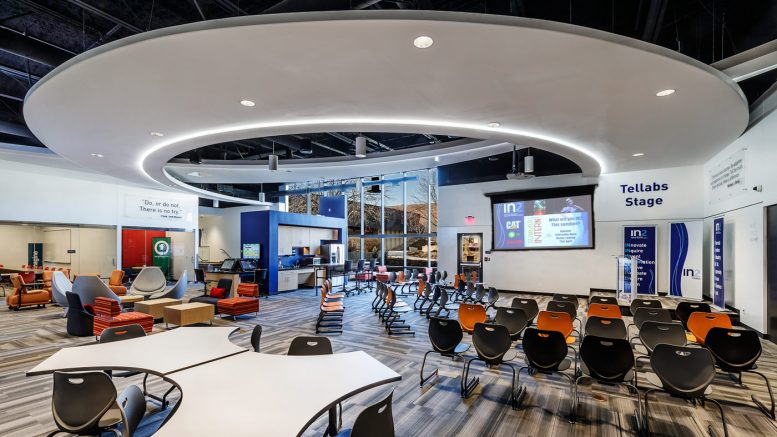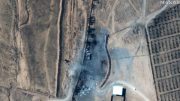The IMSA Innovation Grant was proposed to allow students to present ideas aligned with equity, excellence, impact, and well-being standards. Numerous talented IMSA students crafted outstanding projects and secured prizes for their innovative and creative ideas. The Acronym has interviewed a few winners to understand how students are using the grant and what this means for AI at IMSA.
Aaditya Shah (’25)
Low American Sign Language (ASL) literacy rates in the United States pose a huge communication barrier. Aaditya Shah wants to use the grant to fund his app SignAll, which uses machine learning to translate ASL. According to the Innovation Grant Recipients FY24, The app is already in development and uses a TensorFlow Model for Image Classification, resulting in >99% accuracy.
“I was inspired during the TALENT THINK program, where my team and I worked to find a problem we could solve with our background in computer science,” Aaditya says, “The next steps are to simplify the SignAll model to make it less computationally extensive.” When asked what advice he would give others in their innovation process, Aaditya stated, “I would say to focus on the problem you are trying to solve and identify how to cater your product to the target market. Only after this is clearly defined would I begin exploring the technologies you would use to design your product. Don’t try to do everything at once, and continue adding more to your prototypes over time.”
Jayram Palamdai (’25)
Jayram’s project is called ReDRaFT (short for “Refined text-to-3D via Diffusion-based Radiance Field Training”), which inputs a text prompt and generates continuous 3D scenes. This is broadly analogous to ChatGPT, except it is used to generate fully interactive 3D objects rather than text. It uses a pre-trained AI model that populates the data structure based on interpreting the input prompt.
“It wasn’t really a stroke of genius that got me here. I was looking for a project and saw a paper that looked cool. I thought about how it could be developed further, and that was pretty much it,” He says. Jayram also cooperated with multiple people to explore the idea: “I wanted to explore how my project could be applied within the computer graphics industry, so I recently reached out to Sameer Halepete, Vice President of VLSI Engineering at NVIDIA. In addition to showcasing the current state of NVIDIA Picasso (their visual generative AI team), he introduced me to Edify, NVIDIA’s enterprise-level solution that uses natural text prompts to generate 3D digital assets. He also connected me with Chen-Hsuan Lin, the current head of the Edify team, for potential guidance down the line.”
Jayram advises others in their innovation processes to “Spend time at the beginning and plan things out. It’s very easy to spend a week on a random feature that exactly zero people will use.”
Riyan Jain (’26)
Riyan’s project is an AI-based skin cancer diagnosis app that evaluates whether a suspicious skin lesion could be cancerous, providing diagnoses within a minute. He trained an AI model on thousands of cancerous and non-cancerous images. When presented with a new skin lesion image, the model looks for patterns associated with the cancerous images and assesses whether the image could indicate cancer.
Riyan’s inspirations arose more from his personal experiences than anything, “When my grandfather was diagnosed with an advanced stage cancer, I became acutely aware of the importance of early detection. Recognizing the potential for an AI-based solution, I discovered that skin cancer, with its visible symptoms, was well-suited for analysis through an AI application. Notably, skin cancer is the most prevalent type, affecting four million people annually, and early detection significantly improves the prospects of successful treatment. Motivated by these factors, I resolved to develop an AI-driven solution for skin cancer diagnosis.” Riyan thanks the whole IMSA community for their support of his project. “I’d especially like to thank Mr. Goldblatt for giving feedback regularly and helping me stay on track. Dr. Patankar for his mentorship and ongoing help finding ways to host the application. In addition, I thank the IMSA administration for their support and encouragement during the early stages of my project.”
As for future innovation steps, Riyan says, “One of the key reasons I applied for the AI grant was to be able to add a cloud-based database to my app. This feature would allow users to track the progression of their skin lesions over time, providing invaluable insights. The ability for doctors to observe the development of a lesion over time enhances the diagnostic process and contributes to a more comprehensive understanding of the individual’s condition.”
Riyan’s guidance for future innovators is, “Begin by exploring your surroundings for ideas, as the world is rich with opportunities for improvement. After setting your goals, invest time in meticulous planning—clarifying what you aim to achieve and outlining the strategies to reach those objectives. Acknowledge that the journey may be lengthy and challenging, with outcomes not always aligning with expectations. Be prepared to adapt your methods as necessary, but remain resilient and steadfast. Remember, there will be light at the end of the tunnel.”
Shatakshi Chatterjee (’25)
Shatakshi Chatterjee’s project revolves around the potential implementation of AI in Medical Imaging. Shatakshi plans to leverage the MATLAB Medical Imaging Toolkit, which offers AI test trials for developers.
Speaking on her inspiration for this project, Shatakshi mentions, “I wanted to explore this grant opportunity because I’ve heard that Artificial Intelligence is on the rise currently. There is definitely a lot of upcoming potential for it to be incorporated into more and more software as it develops, so I wanted to take this opportunity to explore it a little bit. Therefore, I combined it with a field that interests me–Medical Imaging.”
Throughout the innovation process, Shatakshi consulted with IMSA President Dr. Evan Glazer, who helped her define the project as a video detailing the applications of AI using MATLAB software, essentially teaching herself how MATLAB utilizes AI in the field of Medical Imaging. Shatakshi’s next steps are to purchase the software, explore it, and produce a video of the research results and findings.
Shatakshi advises anyone in the innovation process to “not be afraid to try something even if you have little to no prior experience like I do with AI. Just take the opportunity to learn and explore with the available resources because I think that is what the IMSA Innovation Grant attempts to foster.”
Kavya Uppal (’25)
Kavya Uppal’s project is a Deepfake Detection website hosted on Amazon Web Services (AWS). Users can upload an image, and an AI model will inform them if it is a real image or a deepfake. This website will use a machine learning deepfake detection model integrated with the explainable AI and Grad-CAM. The explainable AI shows the user the reasoning behind the deepfake detection model’s ultimate decision.
This project was inspired by Kavya’s summer SIR research, where she integrated a few different explainable AIs with a deepfake detection model. Kavya states, “Deepfaked images are incredibly easy to encounter on the internet, and it is important that we know the difference between real and deepfaked images. I am building this website so anyone can identify whether an image is real and why the computer classified it as such.”
Next up, Kavya plans to set up the AWS infrastructure, build out/refine an existing deepfake model, and integrate it with the explainable AI, Grad-CAM. After that, Kavya plans to create a front-end user interface to enable any user to upload an image and check its authenticity. Kavya mentions, “There is a lot of bias in the fields of explainable AI and deepfake detection, and it is imperative for more research to be done to decrease bias. In future versions, I would like to evaluate adding bias explainability to an AI-generated image so it can detect and explain racial, gender, and political bias.”
Kavya shares a message to anyone in the innovation process. “I believe that if someone is really passionate about a certain topic or project, they should pursue it and take advantage of any opportunities that come their way. When I was researching this topic last summer, I always thought it would be interesting to build this website, but in all honesty, I probably would have never pursued this project if I hadn’t been given the chance to apply for this grant. So, if you are reading this right now, this is your sign to build that website, start that business, or apply for that competition that has been at the back of your mind, because you never know what great things it may bring!”
Winston Mattson (’24)
As part of the IMSA Student Productions (ISP) group, Winston Mattson, Evelyn Cunneen (’24), Alea Ritchie (’25), Amanda Barajas (’24), and Malcolm Wilson-Ahlstrom (’24) aim to integrate media Artificial Intelligence into ISP. They immediately purchased a powerful Mac Mini with the allocated funds to begin their AI work. Winston clarifies, “This is only the first part of our AI integration plan, and we hope to expand it into the realms of camera follow work for our video and live stream teams, part of which is already in the works with our drones. In addition, we are also interested in outfitting our studio with AI-powered lights and color switchers to provide easier access to equipment for those with less experience in photography.”
ISP has used the Innovation Grant Program in the past, especially relating to its work with recent spatial updates to the Music Technology Center. The media world is moving down its unique AI path, and IMSA, as a trailblazer, calls for all its departments, including media productions such as ISP, to stay current on all technology.
Winston expresses his gratitude towards “Bill McGrail and Lori Anesi for their help assisting ISP with the brainstorming part of this project. We would also like to thank Dr. Glazer and the Innovation Grant Committee for providing us with the monetary assistance to complete this first step of the project.”






Be the first to comment on "Interview with IMSA’s AI Innovation Project Winners"